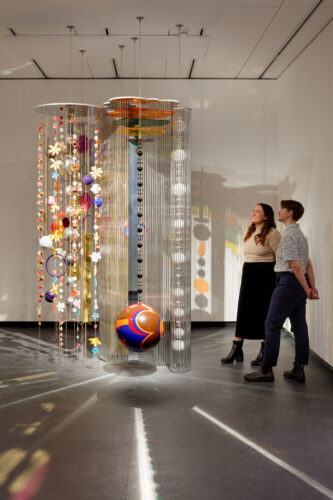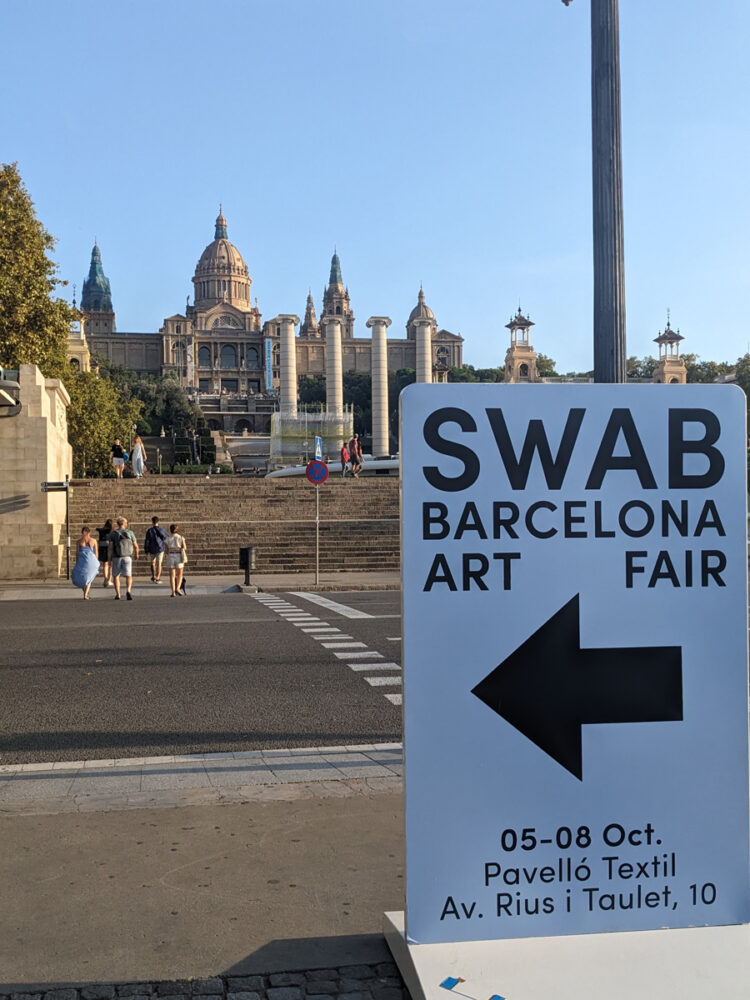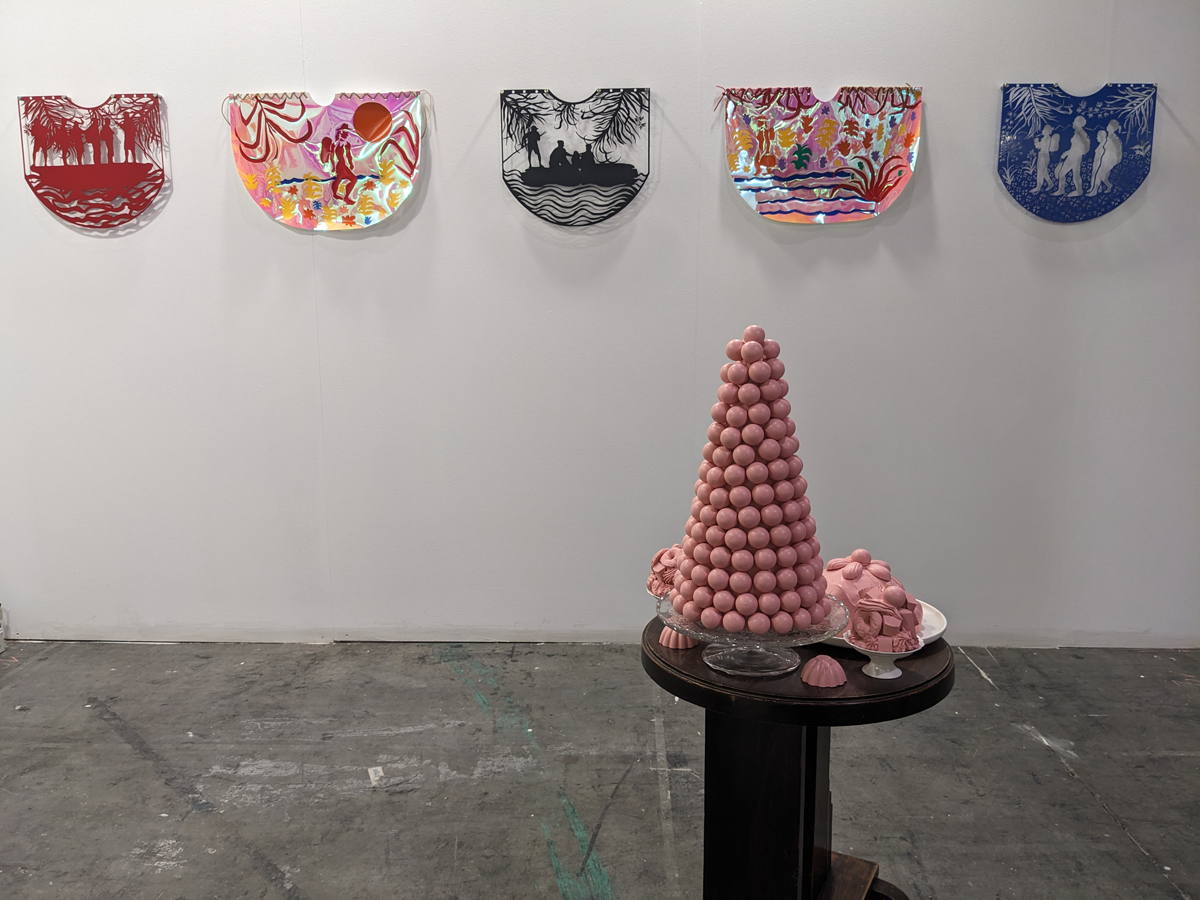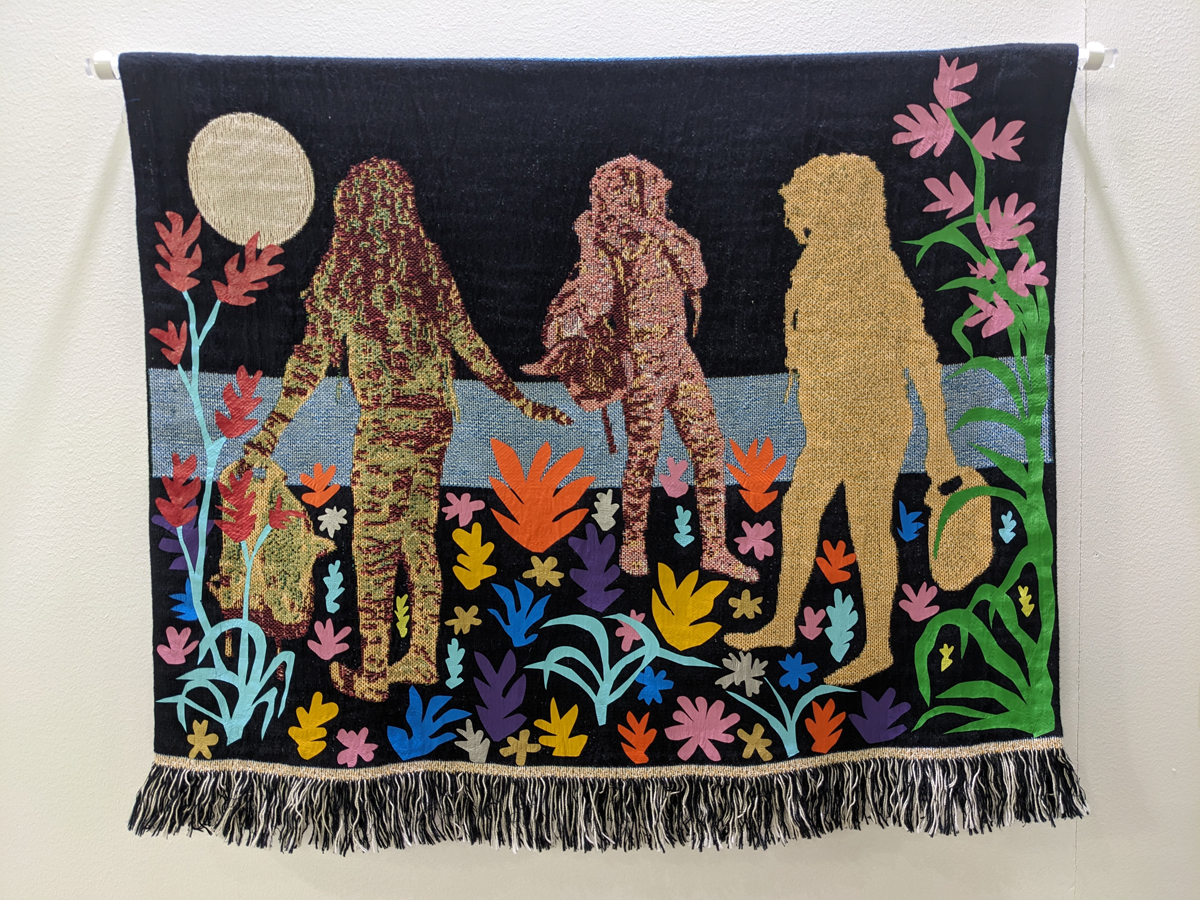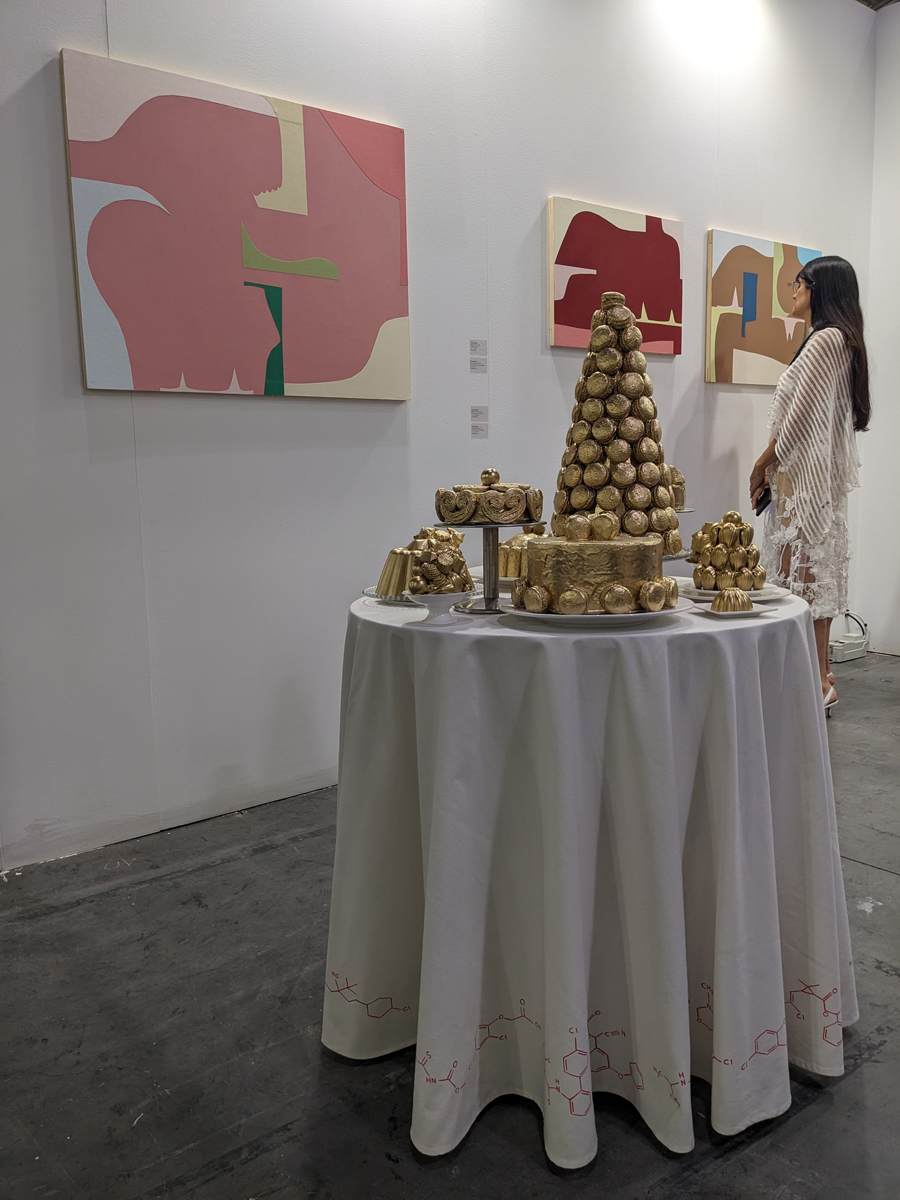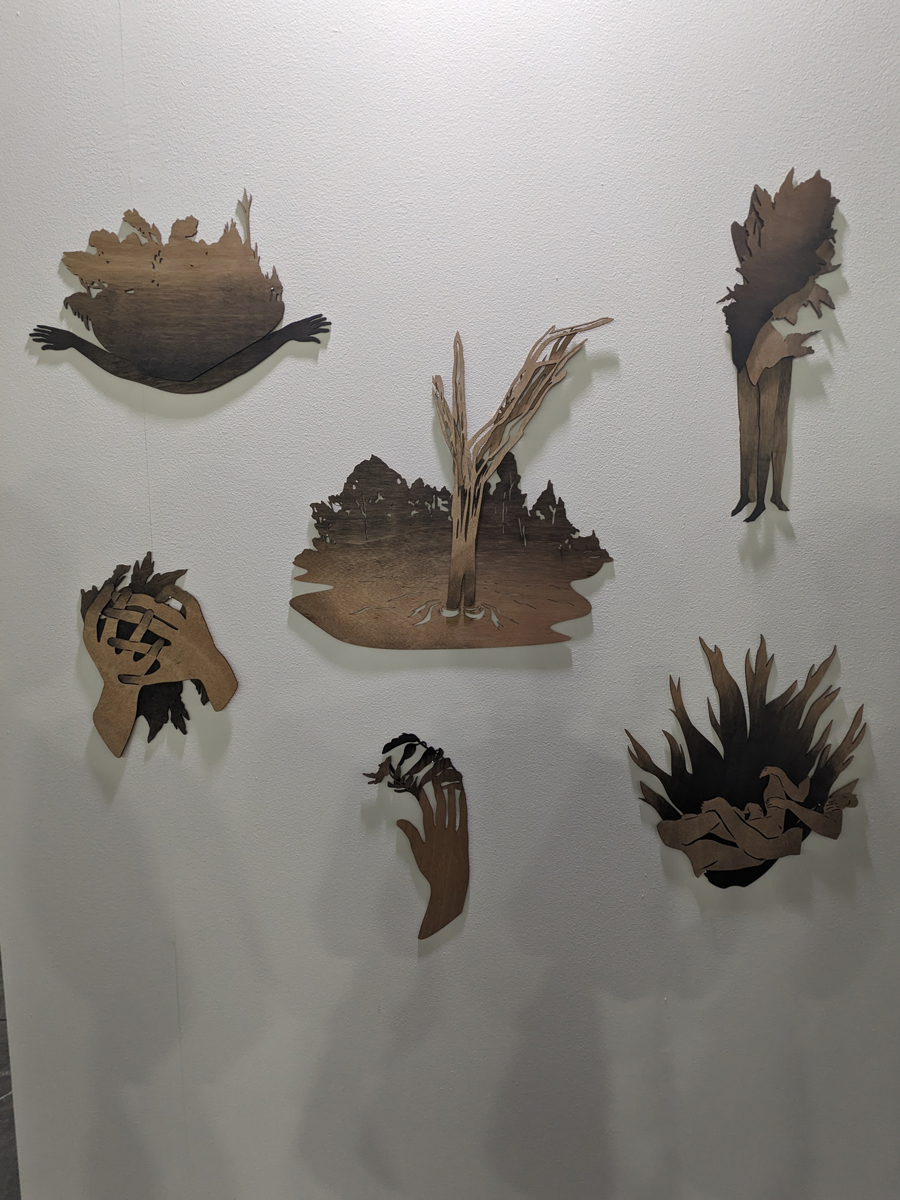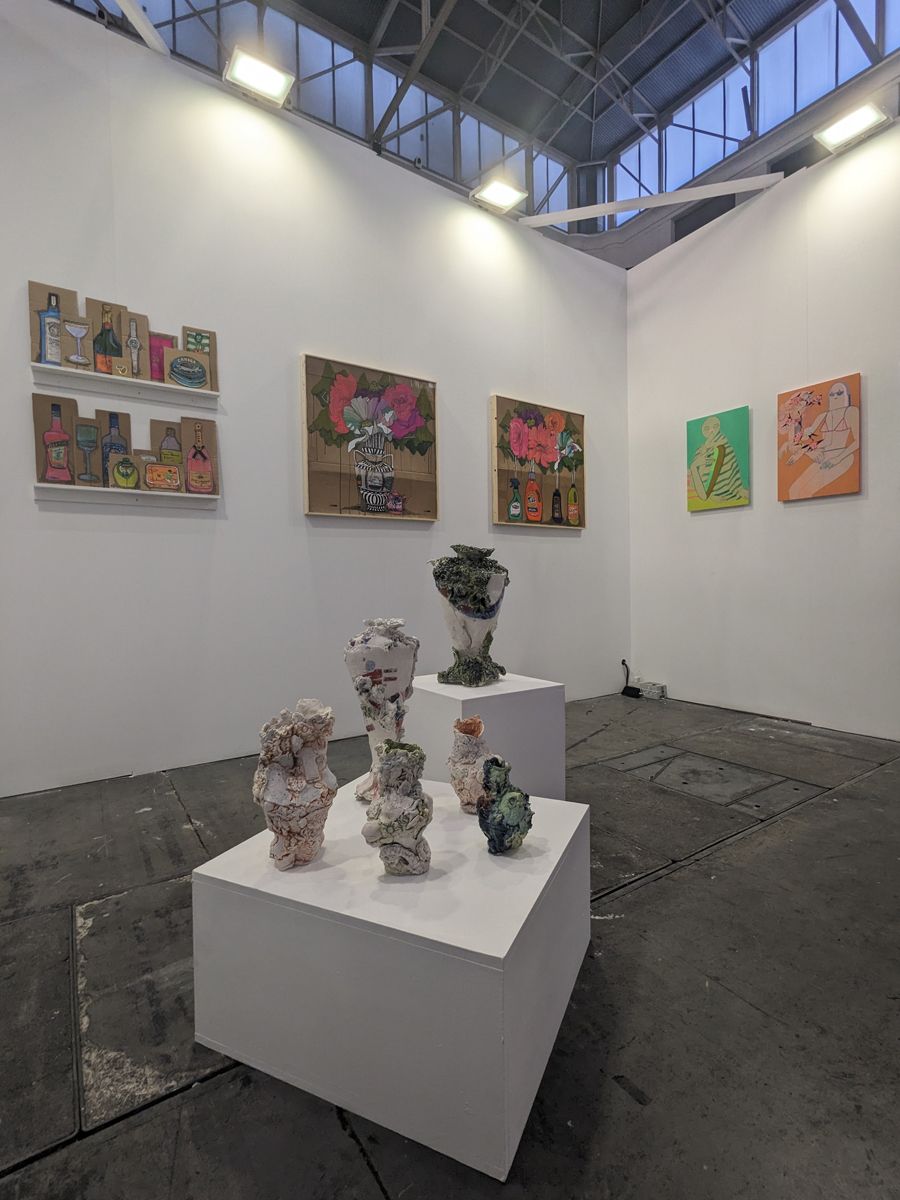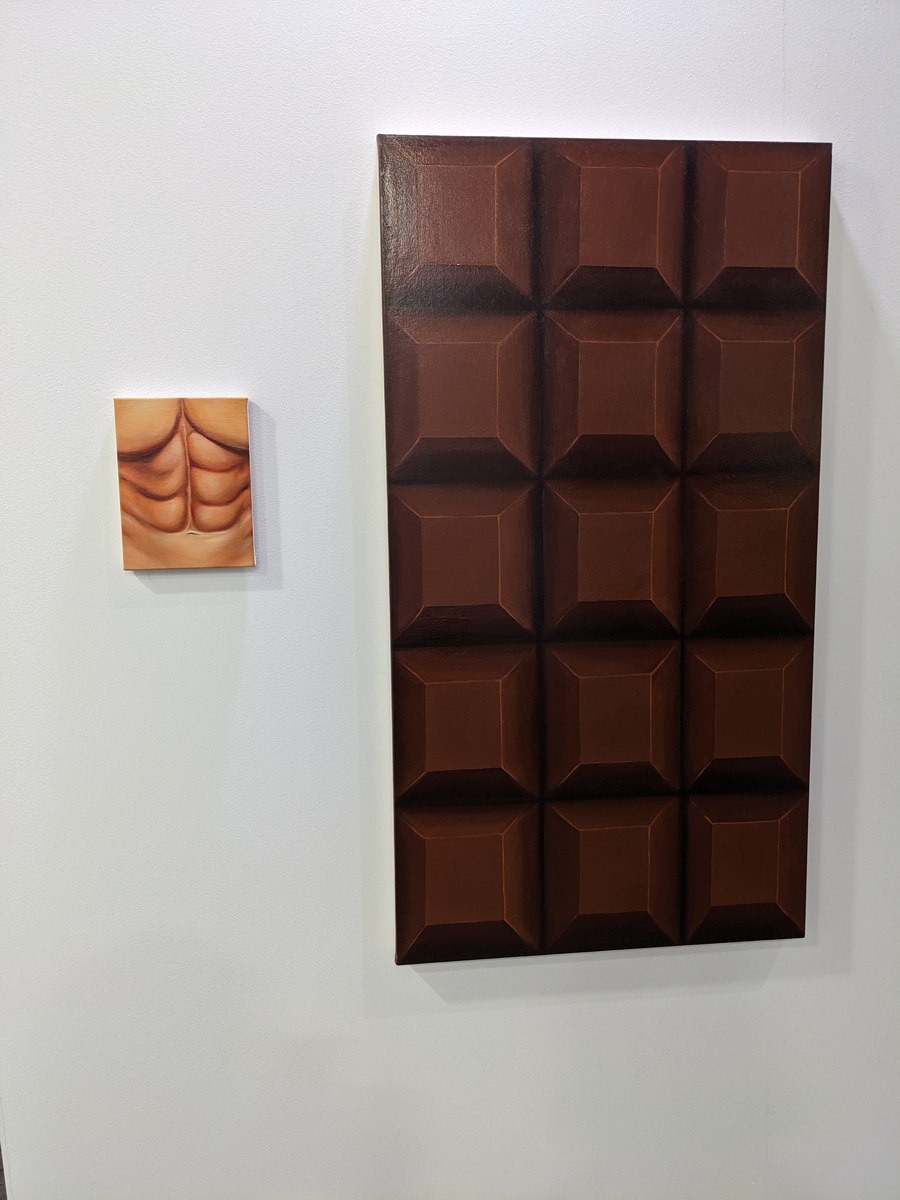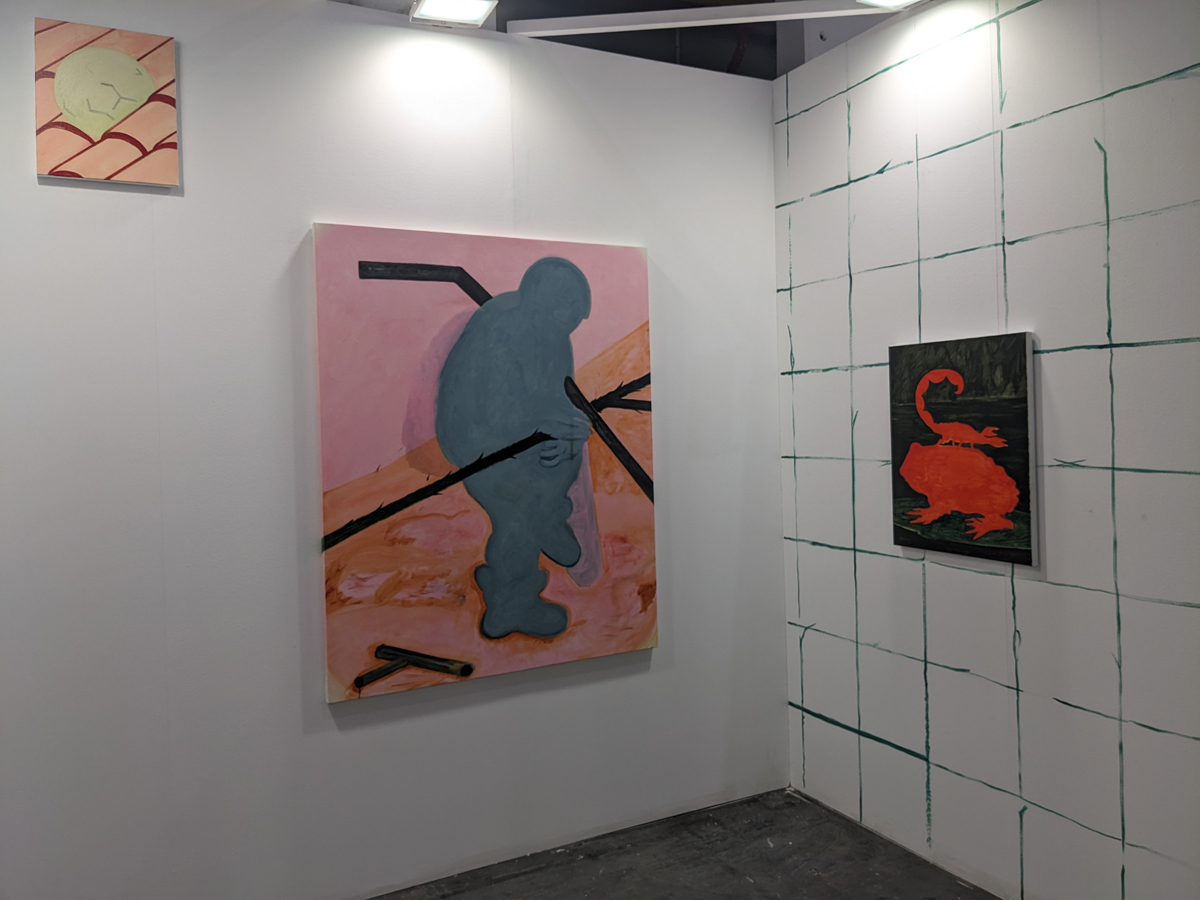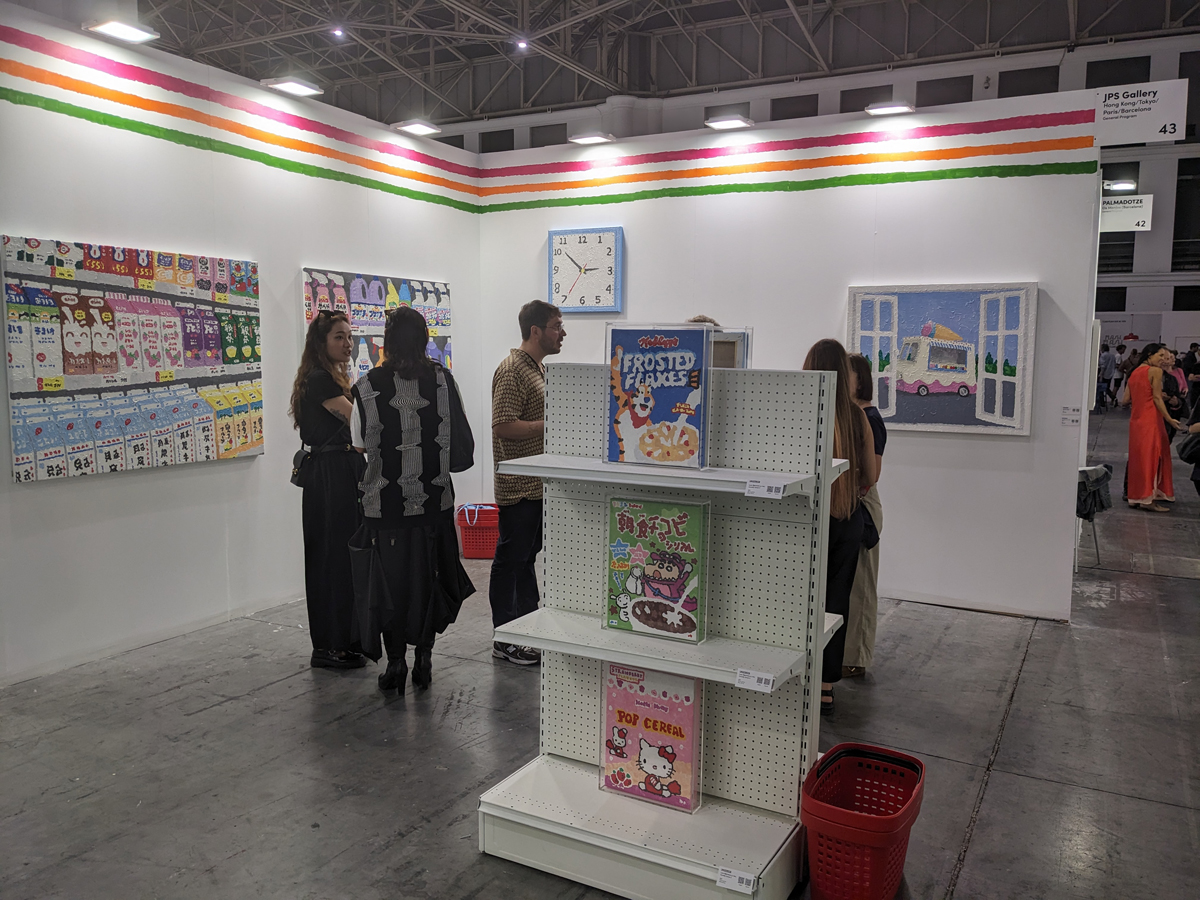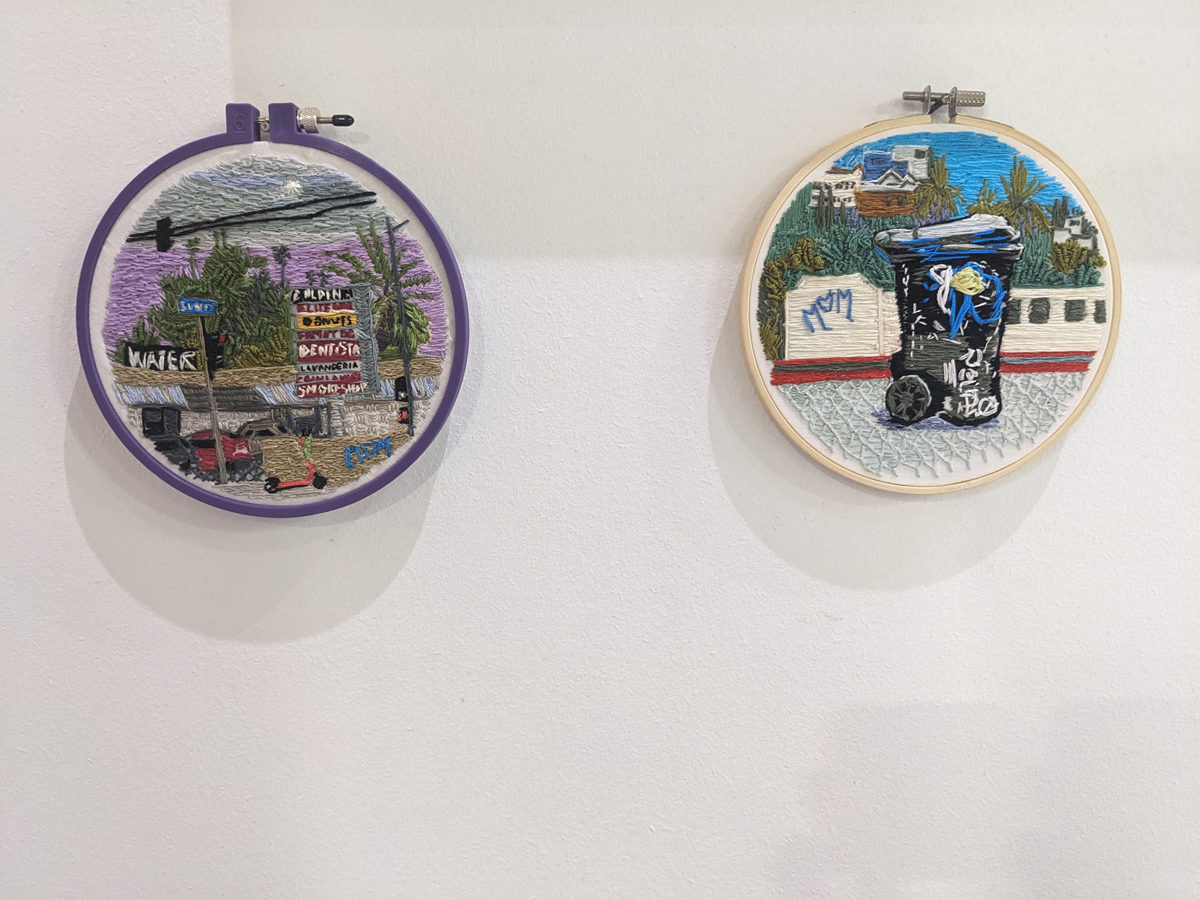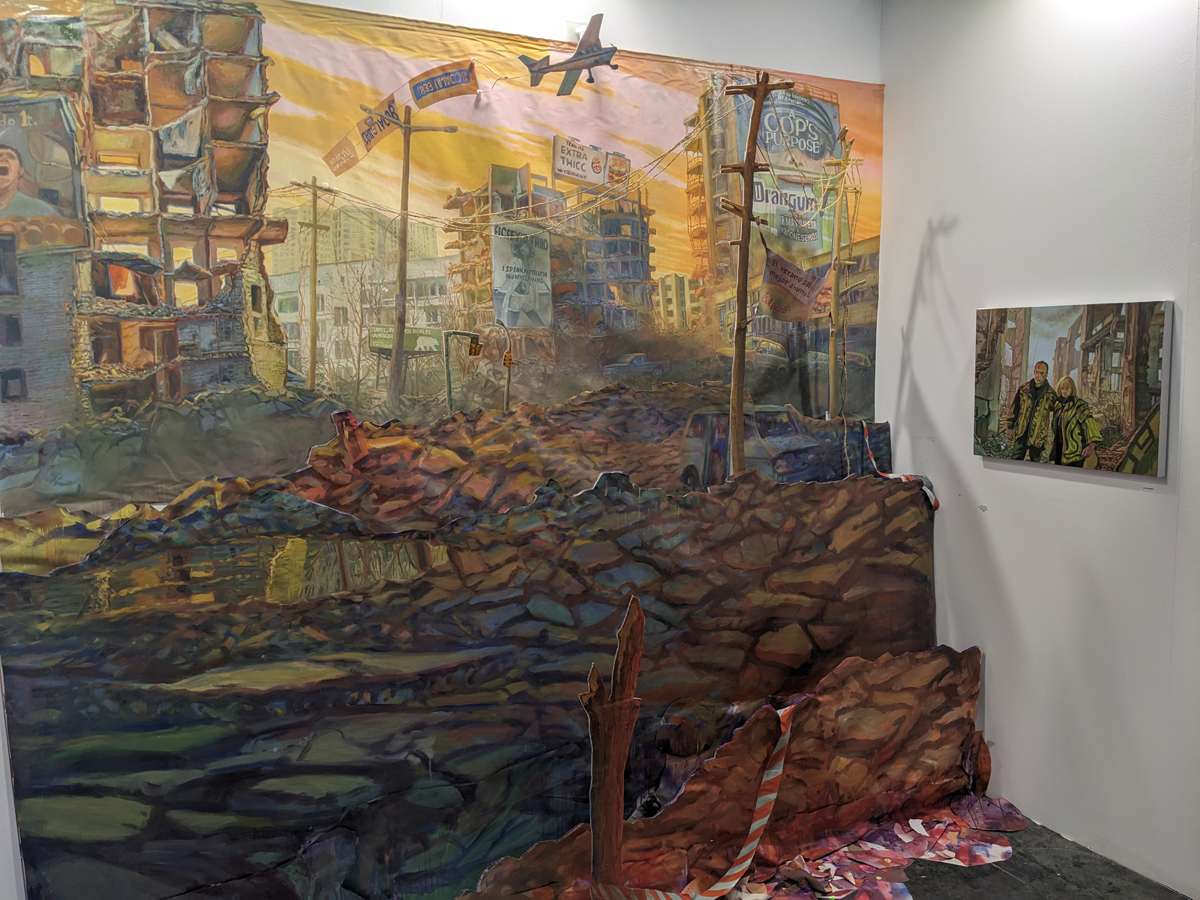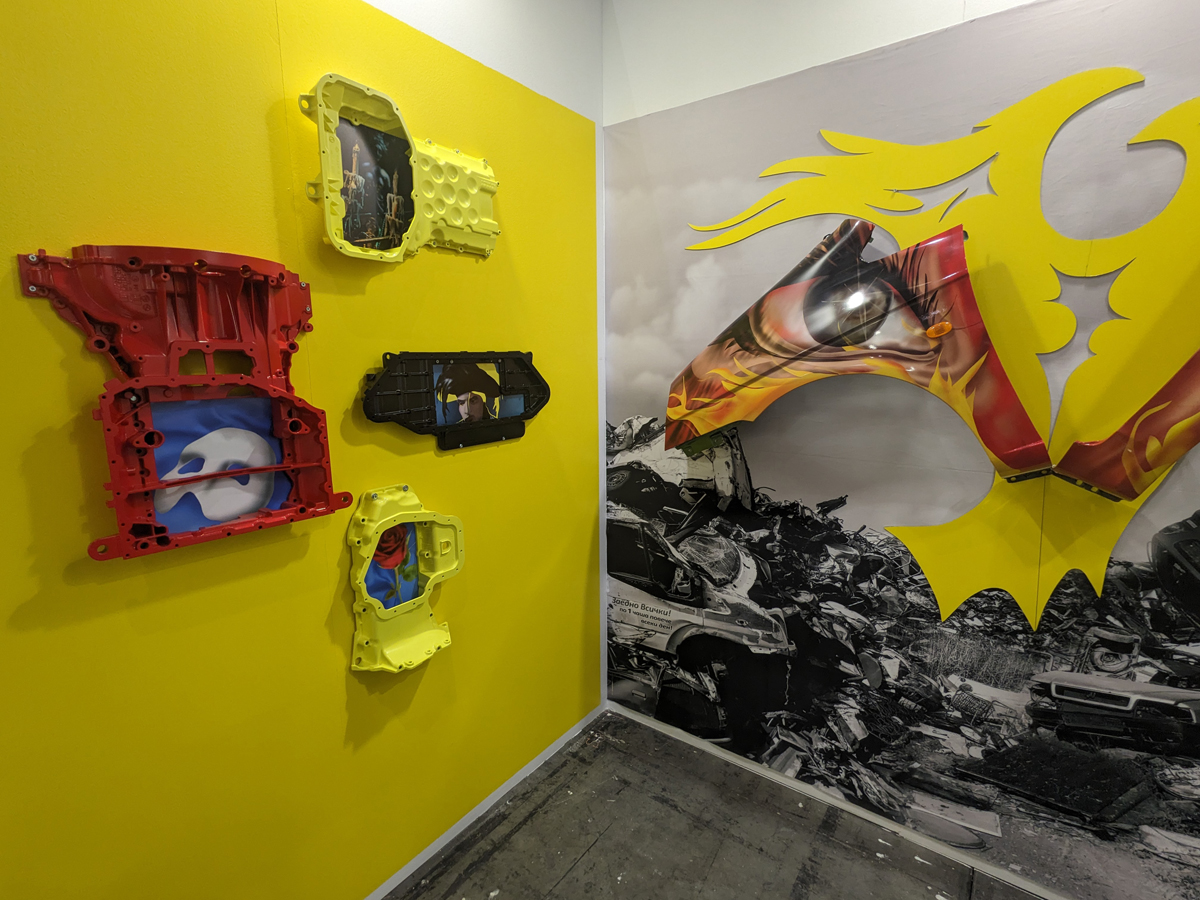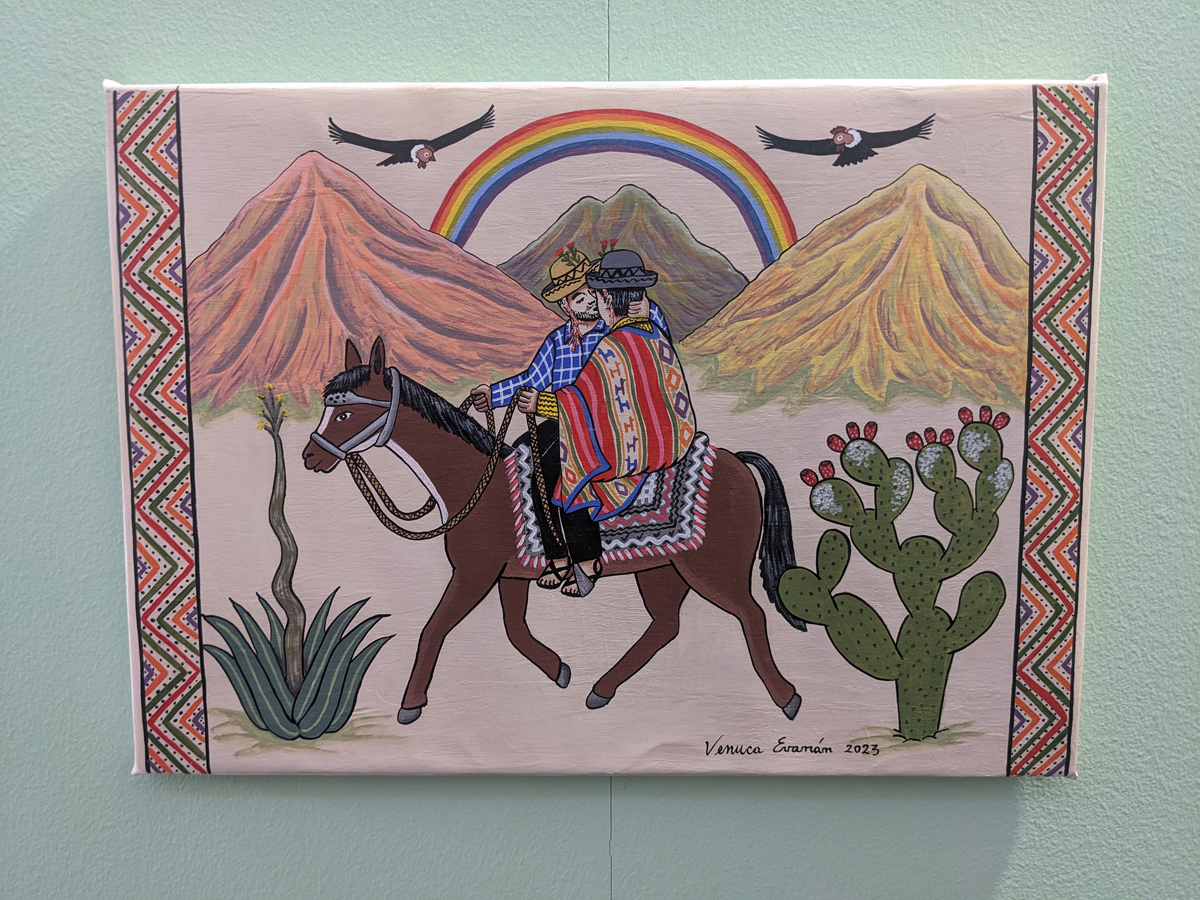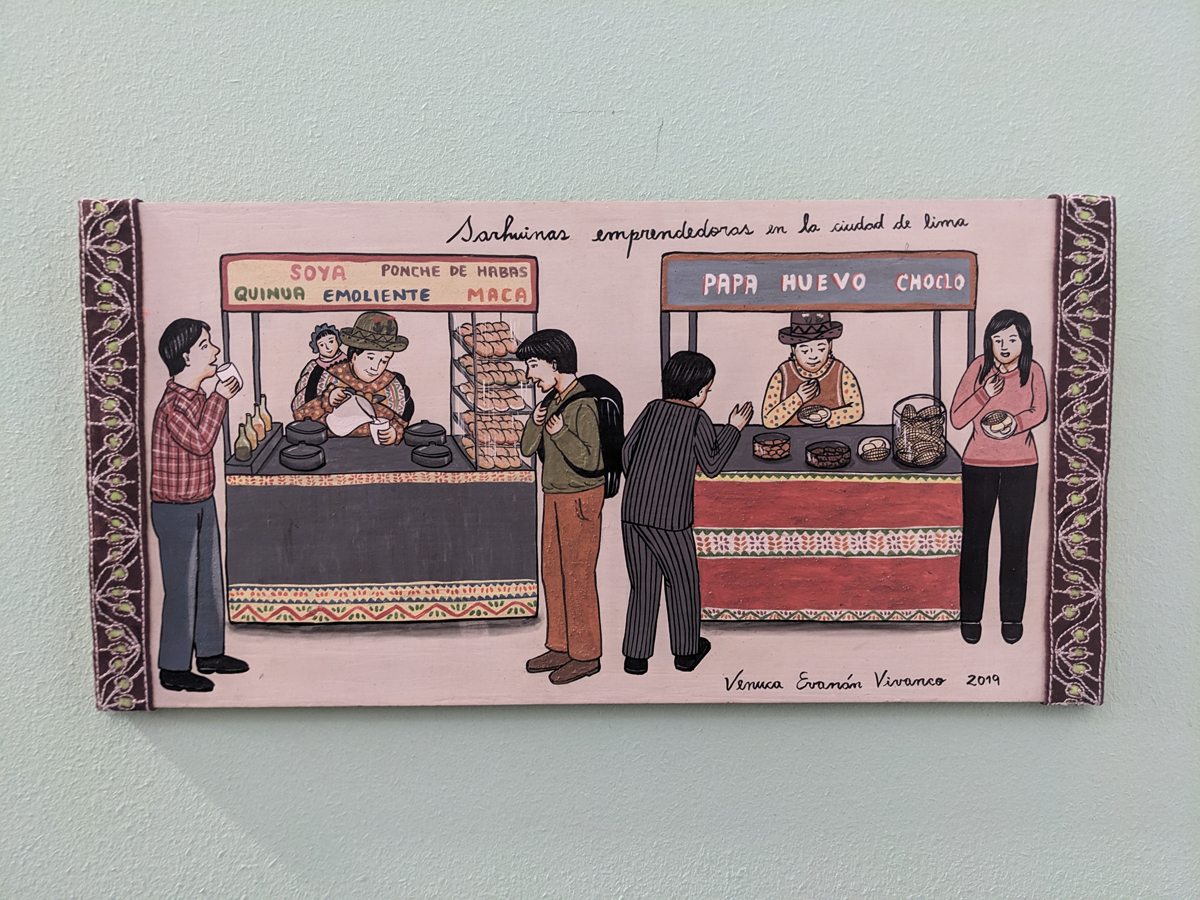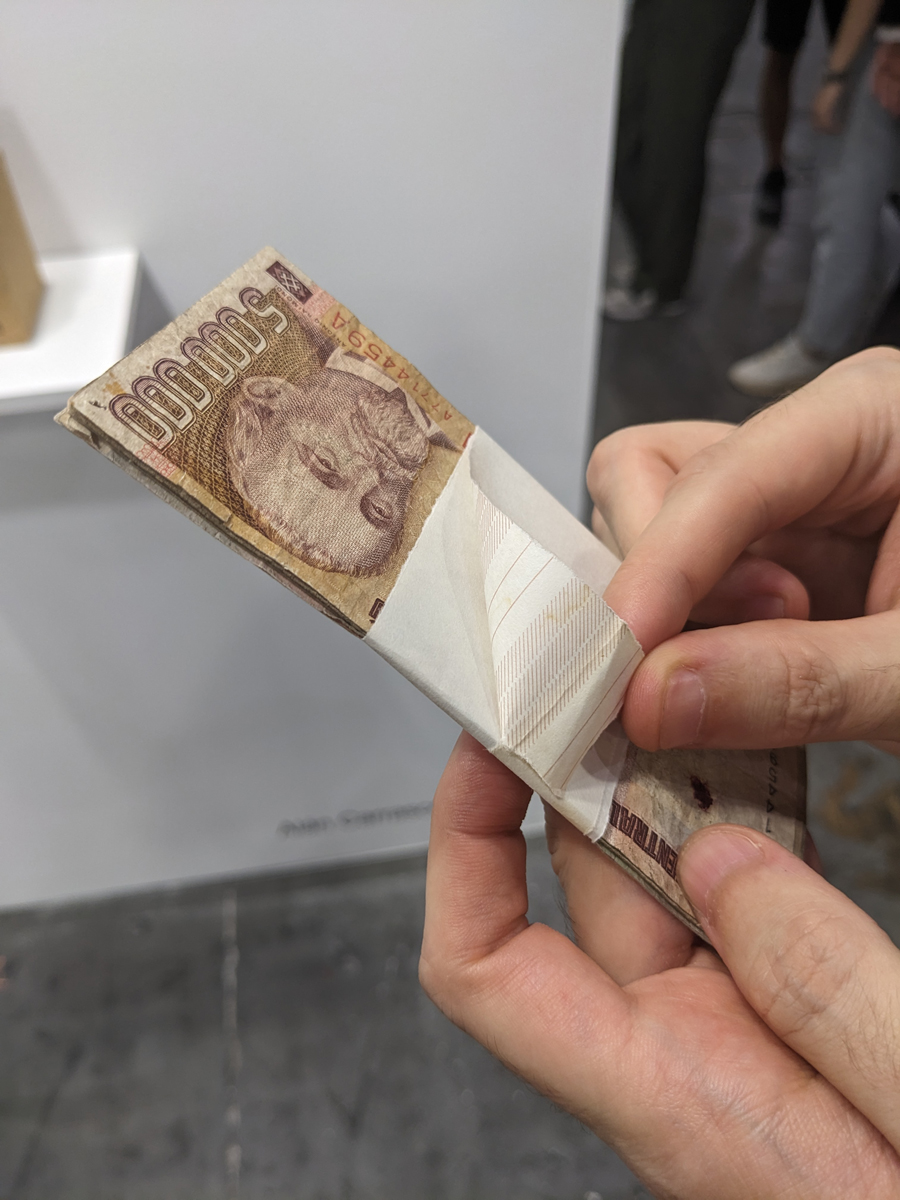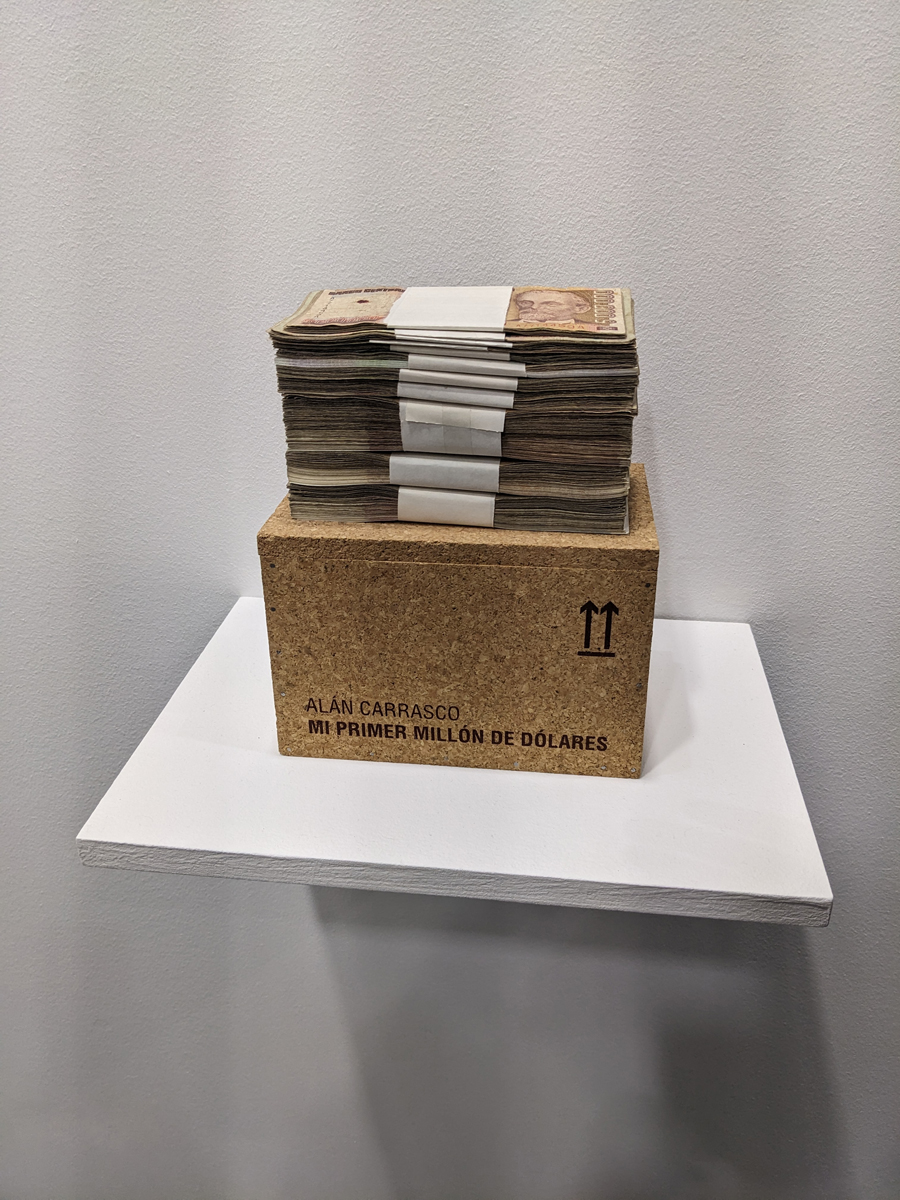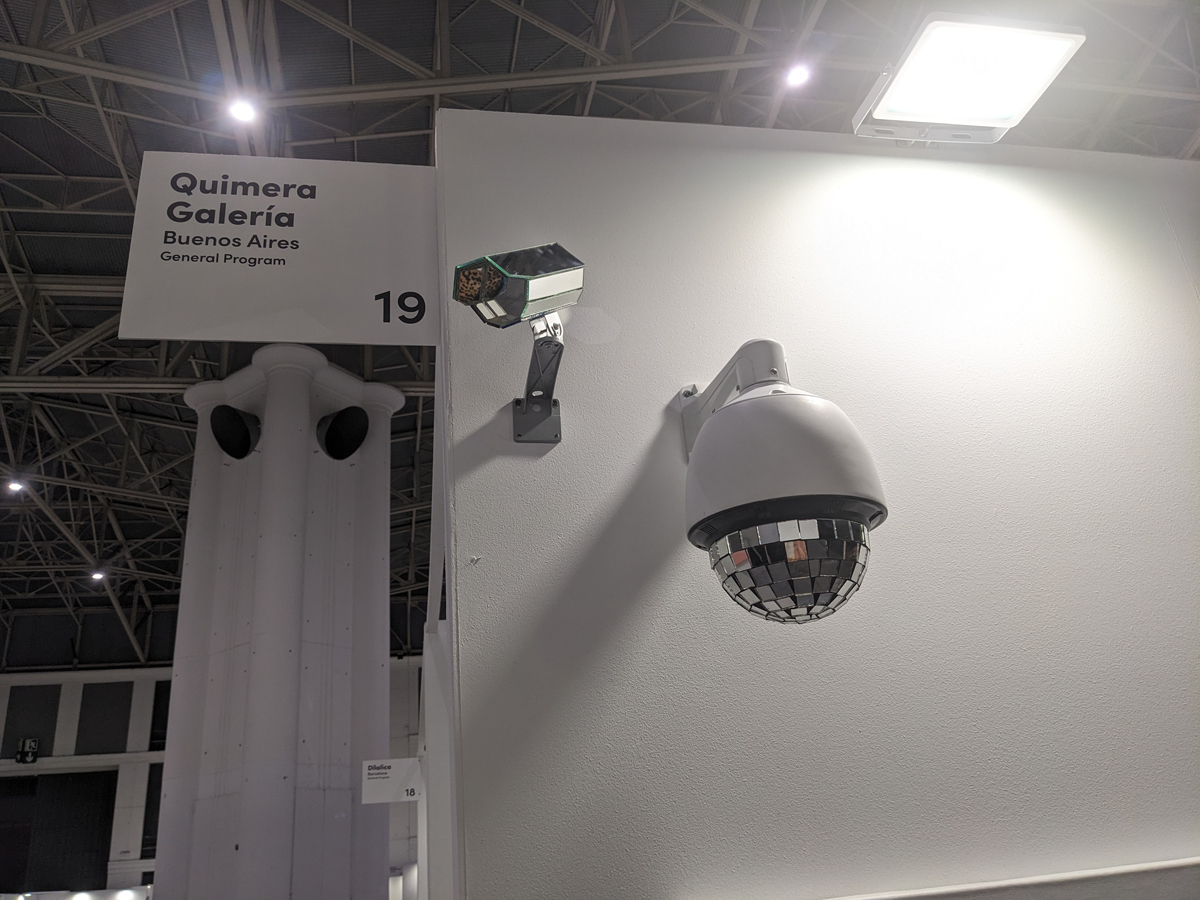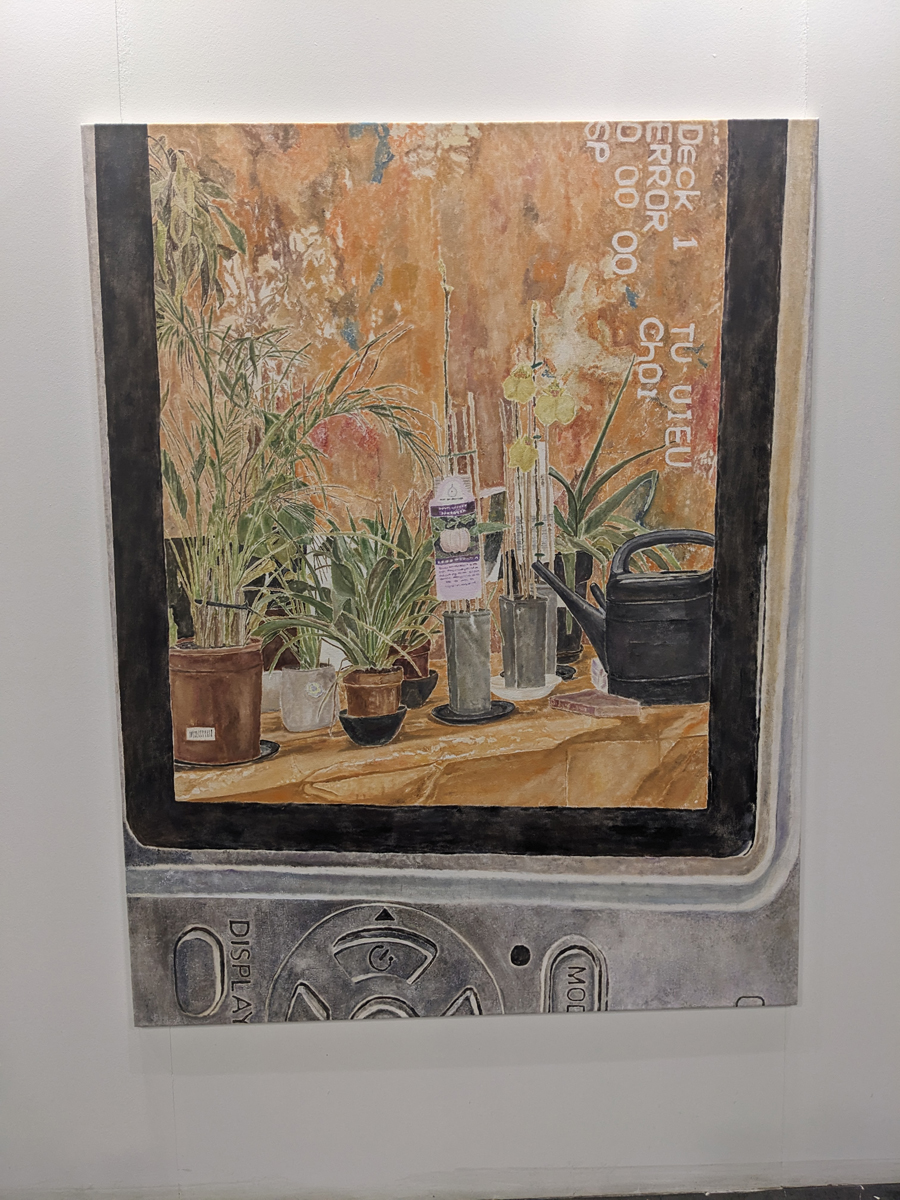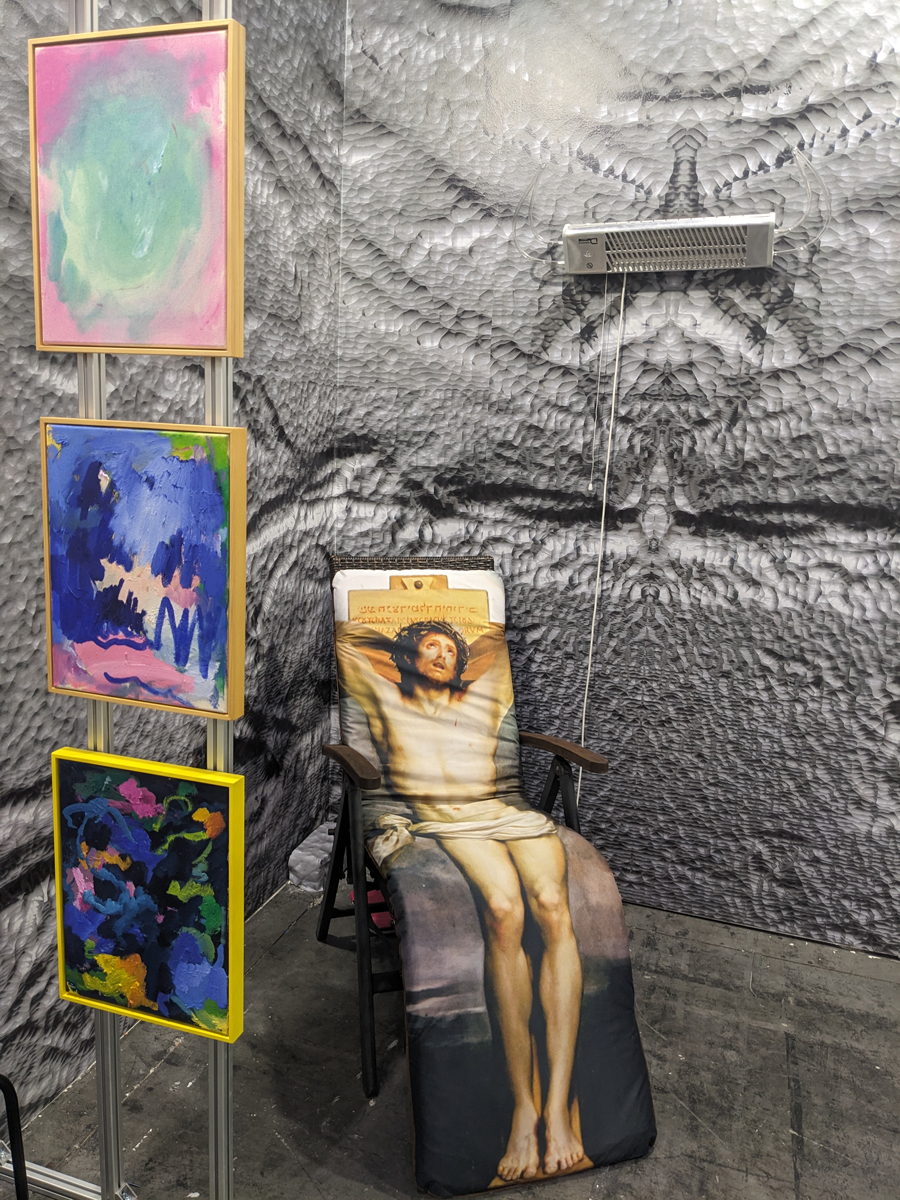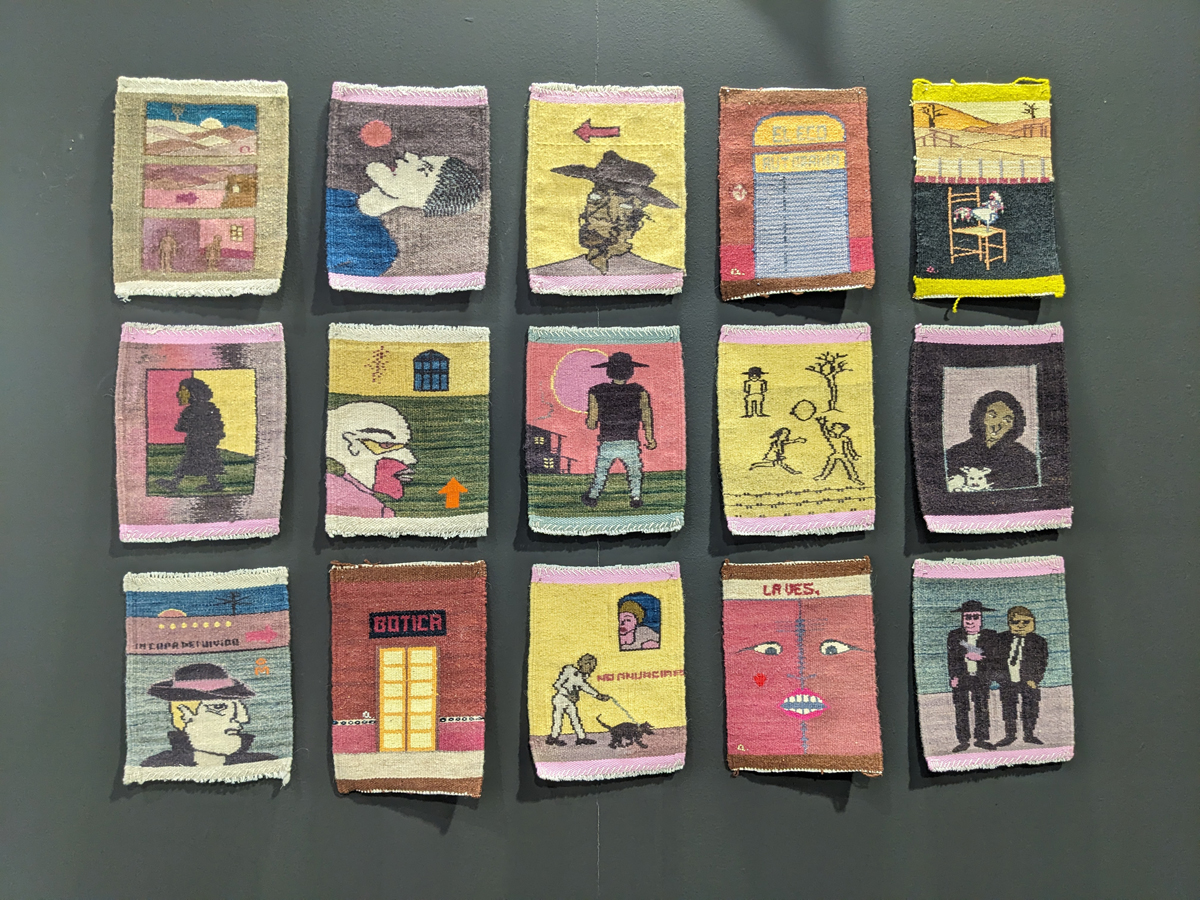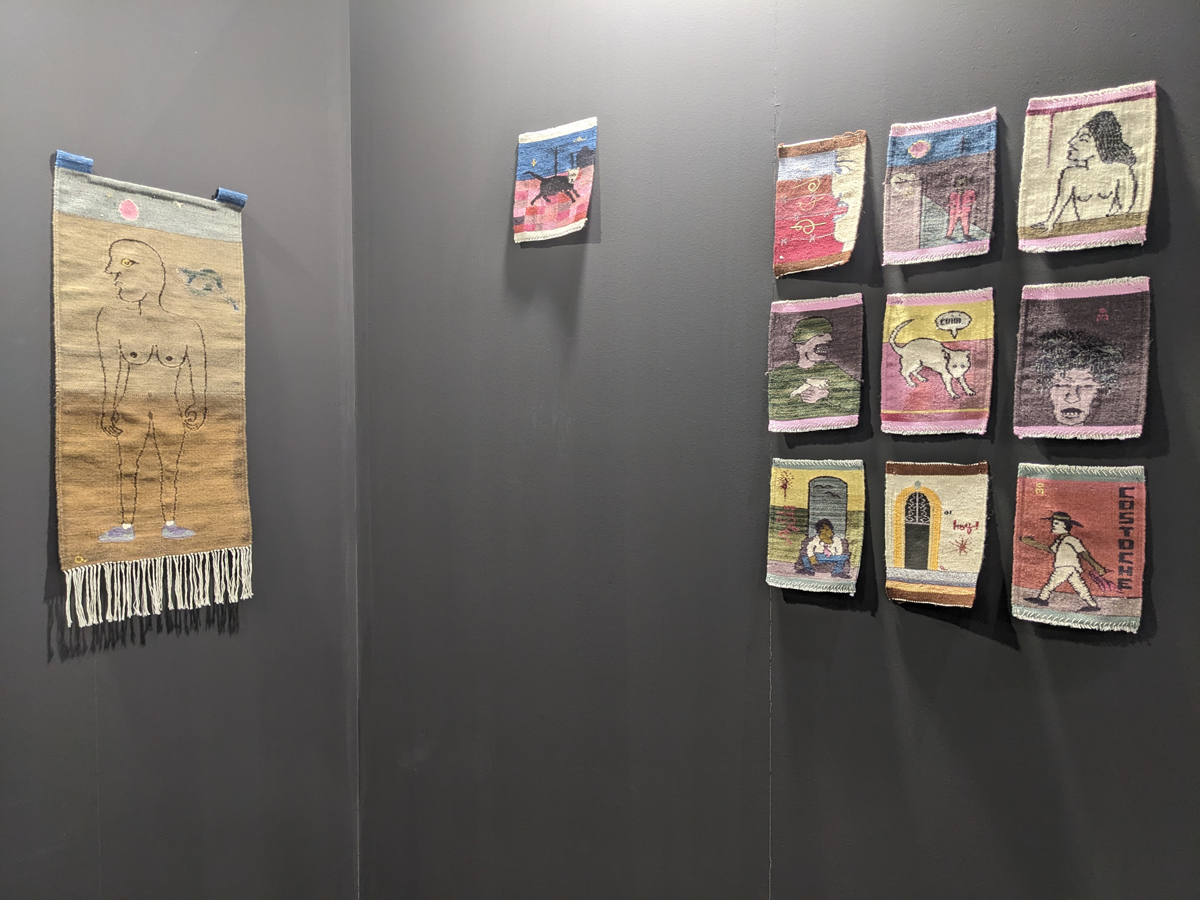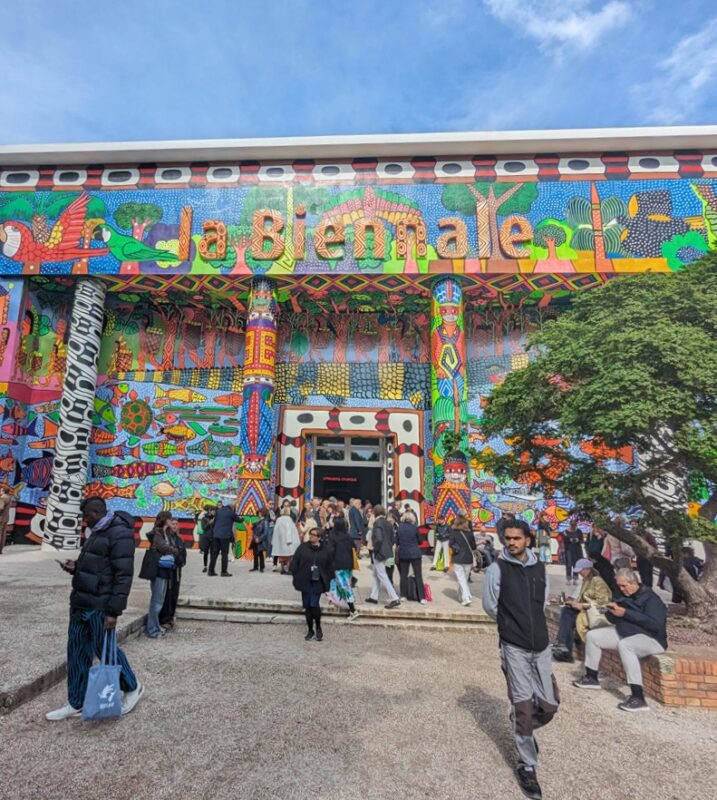But perhaps more importantly, SWAB makes Barcelona’s often abstruse local art world feel accessible. There’s even a whole section of the fair sponsored by Fundació Vila Casas featuring independent, artist-run spaces from Catalunya presenting solo projects with the aim of highlighting regional trends in the art scene. With art spaces largely scattered across the city and its suburbs in former industrial zones or small clusters of storefronts, it often feels difficult to know what to see. Here, the cream of the crop is mostly under one roof, with actual crowd-pleasing works, to boot.
There’s a running joke with my Barcelona friends that this is a city of artists in studios but none in the galleries—so many of the lovely art objects of desire churned out by the legions of skilled ceramicists and classically-trained painters or experimental weavers who call this city home mostly end up getting exported by Barcelona galleries to international art fairs in other cities. Meanwhile, their brick-and-mortar spaces tend to favor a kind of esoteric conceptualism so dry and impenetrable it takes a Catalan-language doctorate in critical theory to even know what you’re looking at. (This is a broad, perhaps unfair generalization, but one that’s largely true: think galleries mostly empty save for a handful of found objects or abstract sound installations dwarfed by monoliths of curatorial text or manifesto-like artist statements. There’s a reason nearly every art opening in this town has thirty people outside on the sidewalk nursing their vermouth and cigarettes for every viewer inside actually looking at the show).
The local intelligentsia’s resistance to displaying commodifiable art objects in their own spaces is probably rooted in a well-intentioned anti-capitalist discourse, but damn, it’s nice to actually look at a painting sometimes! I suspect the curatorial impulse toward heady object privation also tends to unintentionally class-segregate art audiences—walking around SWAB, I find myself wishing so many lovely-but-critically relevant photos, sculptures, drawings, and paintings were in the storefronts everyday people pass by, not tucked away in a convention center, reserved for a deliberate art audience.
As a relatively recent newcomer to Barcelona, I appreciate SWAB as an approachable, welcoming entry point to this city’s art scene and beyond. And as a part-time/native Baltimorean, I so wish we had something like this—international, smart, fun, and so very accessible.
Below, some more highlights:
